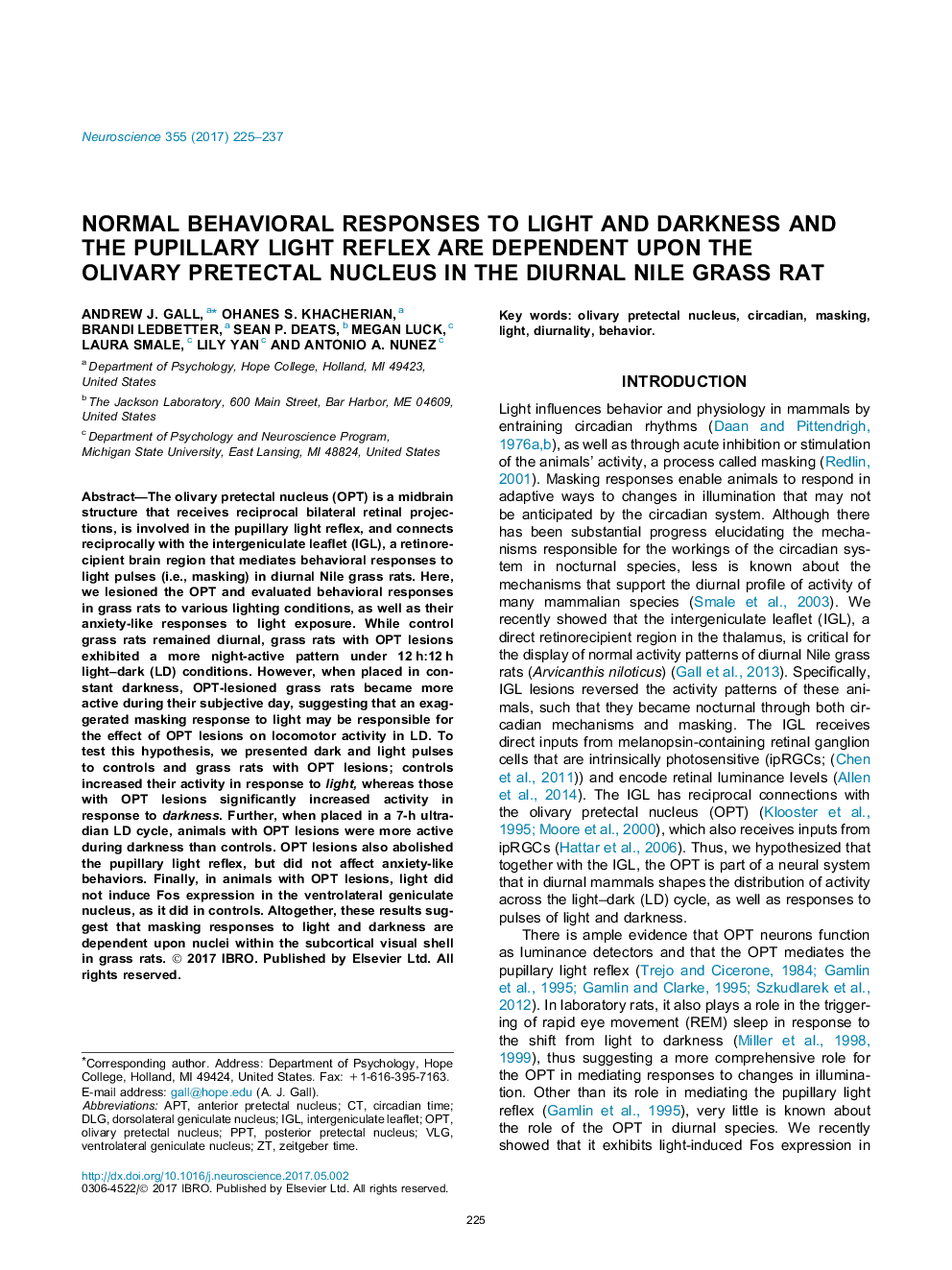| کد مقاله | کد نشریه | سال انتشار | مقاله انگلیسی | نسخه تمام متن |
|---|---|---|---|---|
| 5737605 | 1614721 | 2017 | 13 صفحه PDF | دانلود رایگان |

- The olivary pretectal nucleus (OPT) receives direct retinal input and is involved in the pupillary light reflex.
- We lesioned the OPT in diurnal grass rats and evaluated behavioral responses in grass rats to various lighting conditions.
- Controls increased activity to light pulses, whereas OPT-lesioned grass rats increased activity to dark pulses.
- In grass rats, the OPT and its thalamic connections mediate masking responses to light and darkness.
The olivary pretectal nucleus (OPT) is a midbrain structure that receives reciprocal bilateral retinal projections, is involved in the pupillary light reflex, and connects reciprocally with the intergeniculate leaflet (IGL), a retinorecipient brain region that mediates behavioral responses to light pulses (i.e., masking) in diurnal Nile grass rats. Here, we lesioned the OPT and evaluated behavioral responses in grass rats to various lighting conditions, as well as their anxiety-like responses to light exposure. While control grass rats remained diurnal, grass rats with OPT lesions exhibited a more night-active pattern under 12Â h:12Â h light-dark (LD) conditions. However, when placed in constant darkness, OPT-lesioned grass rats became more active during their subjective day, suggesting that an exaggerated masking response to light may be responsible for the effect of OPT lesions on locomotor activity in LD. To test this hypothesis, we presented dark and light pulses to controls and grass rats with OPT lesions; controls increased their activity in response to light, whereas those with OPT lesions significantly increased activity in response to darkness. Further, when placed in a 7-h ultradian LD cycle, animals with OPT lesions were more active during darkness than controls. OPT lesions also abolished the pupillary light reflex, but did not affect anxiety-like behaviors. Finally, in animals with OPT lesions, light did not induce Fos expression in the ventrolateral geniculate nucleus, as it did in controls. Altogether, these results suggest that masking responses to light and darkness are dependent upon nuclei within the subcortical visual shell in grass rats.
Journal: Neuroscience - Volume 355, 4 July 2017, Pages 225-237